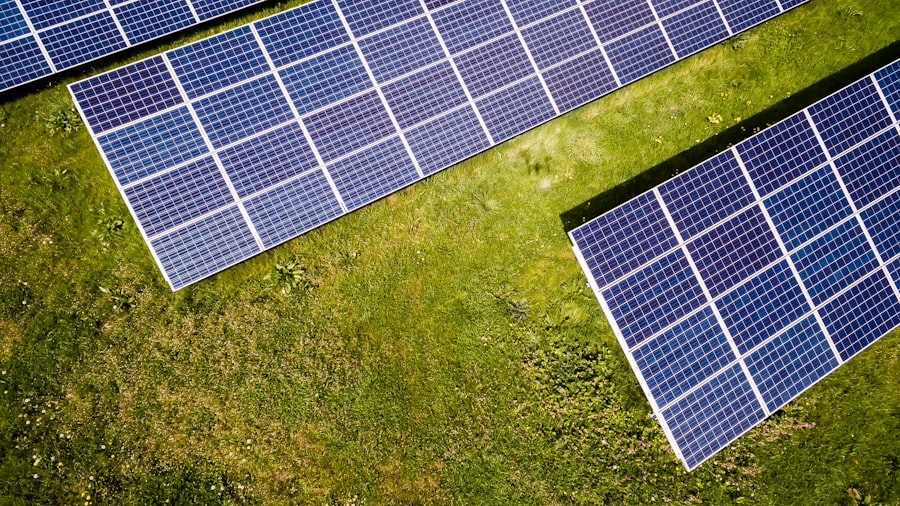In an era where climate change and environmental sustainability are at the forefront of global discussions, the significance of renewable energy monitoring cannot be overstated. As more homeowners and businesses transition to renewable energy sources such as solar, wind, and hydroelectric power, the need for effective monitoring systems becomes increasingly critical. These systems not only track energy production and consumption but also provide insights into system performance, efficiency, and potential issues that may arise.
By understanding how much energy is being generated and consumed, users can make informed decisions that optimize their energy use and reduce their carbon footprint. Moreover, renewable energy monitoring plays a pivotal role in maximizing the return on investment for renewable energy systems. For instance, a solar panel installation represents a significant financial commitment, and without proper monitoring, homeowners may not fully realize the benefits of their investment.
Monitoring tools can identify underperformance due to shading, dirt accumulation, or equipment malfunctions, allowing for timely interventions that can restore optimal functionality. This proactive approach not only enhances energy savings but also extends the lifespan of the renewable energy systems in place.
Key Takeaways
- Renewable energy monitoring is important for tracking and optimizing energy production and consumption.
- Understanding renewable energy monitoring tools is essential for maximizing the benefits of renewable energy systems.
- Using renewable energy monitoring tools can lead to cost savings, improved energy efficiency, and reduced environmental impact.
- Renewable energy monitoring tools empower homeowners by providing real-time data and insights into their energy usage and production.
- Choosing the right renewable energy monitoring tool for your home involves considering factors such as compatibility, features, and cost.
Understanding Renewable Energy Monitoring Tools
Renewable energy monitoring tools encompass a wide range of technologies designed to track and analyze the performance of renewable energy systems.
Hardware components often include sensors and meters that collect data on energy production, consumption, and environmental conditions.
For example, solar inverters typically come equipped with monitoring capabilities that provide real-time data on the amount of electricity generated by solar panels. On the software side, various applications and platforms aggregate this data, offering users intuitive dashboards that visualize performance metrics over time. The sophistication of these tools varies significantly.
Some basic monitoring systems provide simple readouts of energy production and consumption, while advanced systems offer detailed analytics, predictive maintenance alerts, and integration with smart home technologies. For instance, platforms like Enphase Enlighten or SolarEdge provide comprehensive insights into individual panel performance, allowing users to pinpoint issues at a granular level. Additionally, many modern monitoring tools are equipped with mobile applications that enable users to access their data remotely, ensuring they can stay informed about their energy systems from anywhere.
Benefits of Using Renewable Energy Monitoring Tools
The advantages of employing renewable energy monitoring tools extend beyond mere data collection; they fundamentally enhance the user experience and operational efficiency of renewable energy systems. One of the primary benefits is the ability to optimize energy consumption. By analyzing usage patterns, homeowners can adjust their habits to align with peak production times.
For example, if a solar system generates the most electricity during midday hours, homeowners can schedule high-energy activities—such as running dishwashers or charging electric vehicles—during these times to maximize self-consumption. Another significant benefit is the early detection of issues that could lead to system inefficiencies or failures. Monitoring tools can alert users to anomalies such as sudden drops in energy production or irregular consumption patterns.
For instance, if a solar panel’s output suddenly decreases due to shading from newly grown trees or a malfunctioning inverter, the monitoring system can send an alert to the homeowner’s smartphone. This immediate feedback allows for prompt action, whether it’s contacting a technician for repairs or adjusting the system configuration to mitigate the issue.
How Renewable Energy Monitoring Tools Empower Homeowners
Renewable energy monitoring tools empower homeowners by providing them with actionable insights into their energy systems. This empowerment fosters a sense of ownership and responsibility regarding energy consumption and sustainability practices. Homeowners can track their energy generation in real-time, which not only enhances their understanding of how their systems work but also encourages them to engage more actively in energy-saving behaviors.
For instance, seeing a spike in energy production on a sunny day might motivate homeowners to use more electricity during that time rather than relying on grid power. Furthermore, these tools facilitate informed decision-making regarding future investments in energy efficiency upgrades or additional renewable technologies. By analyzing historical data on energy production and consumption trends, homeowners can identify opportunities for improvement.
For example, if a homeowner notices that their solar panels consistently produce excess energy during certain months but struggle during others, they might consider investing in battery storage solutions to store surplus energy for later use. This strategic approach not only enhances self-sufficiency but also contributes to long-term cost savings.
Choosing the Right Renewable Energy Monitoring Tool for Your Home
Selecting the appropriate renewable energy monitoring tool requires careful consideration of several factors tailored to individual needs and preferences. First and foremost, homeowners should assess the type of renewable energy system they have installed—be it solar panels, wind turbines, or geothermal systems—as different technologies may require specific monitoring solutions. For instance, solar monitoring tools often focus on metrics such as panel output and inverter performance, while wind monitoring may emphasize wind speed and turbine efficiency.
Another critical aspect is the level of detail and functionality desired from the monitoring tool. Homeowners should evaluate whether they prefer basic monitoring capabilities or more advanced features such as predictive analytics and integration with smart home devices. Additionally, compatibility with existing systems is essential; some monitoring tools may only work with specific brands or models of renewable energy equipment.
User-friendliness is also paramount; an intuitive interface can significantly enhance the user experience by making it easier to interpret data and take action based on insights gained.
Tips for Maximizing the Benefits of Renewable Energy Monitoring Tools
To fully leverage the advantages offered by renewable energy monitoring tools, homeowners should adopt several best practices that enhance their effectiveness. Regularly reviewing performance data is crucial; setting aside time each month to analyze trends can help identify patterns in energy production and consumption that may warrant adjustments in behavior or system configuration. Homeowners should also take advantage of any alerts or notifications provided by their monitoring systems to stay informed about potential issues before they escalate into costly repairs.
Engaging with community resources can further amplify the benefits of monitoring tools. Many regions have local groups or online forums where homeowners share experiences and tips related to renewable energy systems.
Additionally, homeowners should consider periodic professional assessments of their systems; while monitoring tools provide valuable data, expert evaluations can uncover underlying issues that may not be immediately apparent through self-monitoring alone.
Case Studies: How Homeowners Have Benefited from Renewable Energy Monitoring
Numerous case studies illustrate how homeowners have successfully utilized renewable energy monitoring tools to enhance their energy efficiency and reduce costs. One notable example involves a family in California who installed a solar panel system equipped with advanced monitoring capabilities. Initially skeptical about the potential savings, they began using the monitoring app to track their daily energy production and consumption patterns.
Over time, they discovered that by shifting their laundry and dishwashing activities to coincide with peak solar production hours, they could significantly reduce their reliance on grid electricity. This simple adjustment led to a 30% reduction in their monthly utility bills. Another compelling case is that of a homeowner in Texas who faced frequent outages due to extreme weather conditions affecting their wind turbine system.
By utilizing a comprehensive monitoring tool that provided real-time data on wind speeds and turbine performance, they were able to identify periods when their turbine was underperforming due to mechanical issues. Armed with this information, they promptly contacted a technician who diagnosed and repaired the problem before it led to a complete system failure. As a result, they not only maintained consistent power generation but also extended the lifespan of their turbine through proactive maintenance.
The Future of Renewable Energy Monitoring for Homeowners
The future of renewable energy monitoring for homeowners is poised for significant advancements driven by technological innovation and increasing consumer demand for sustainability solutions. As smart home technologies continue to evolve, we can expect greater integration between renewable energy systems and home automation platforms. This integration will enable seamless communication between devices, allowing homeowners to optimize their energy use dynamically based on real-time data from both renewable sources and household consumption patterns.
Moreover, advancements in artificial intelligence (AI) and machine learning are likely to enhance predictive analytics capabilities within monitoring tools. These technologies will enable more sophisticated forecasting models that can anticipate energy production based on weather patterns or historical performance data. As a result, homeowners will be better equipped to manage their energy resources efficiently while maximizing savings and minimizing environmental impact.
The ongoing development of user-friendly interfaces will further democratize access to these advanced features, ensuring that all homeowners—regardless of technical expertise—can benefit from enhanced renewable energy monitoring solutions in the years to come.
A related article discussing the top trends in e-commerce business can be found at this link. This article explores the latest developments and innovations in the e-commerce industry, providing valuable insights for businesses looking to stay ahead of the curve. By leveraging renewable energy monitoring tools, homeowners can also benefit from the convenience and efficiency of online shopping, making it easier to adopt sustainable practices in their everyday lives.
FAQs
What are renewable energy monitoring tools?
Renewable energy monitoring tools are devices or software that allow homeowners to track and analyze the performance of their renewable energy systems, such as solar panels or wind turbines. These tools provide real-time data on energy production, consumption, and savings.
How do renewable energy monitoring tools empower homeowners?
Renewable energy monitoring tools empower homeowners by providing them with valuable insights into their energy usage and production. This allows homeowners to make informed decisions about their energy consumption, identify potential issues with their renewable energy systems, and optimize their energy usage to maximize savings.
What are the benefits of using renewable energy monitoring tools?
The benefits of using renewable energy monitoring tools include increased awareness of energy usage, improved system performance, potential cost savings, and reduced environmental impact. These tools also provide homeowners with the ability to remotely monitor and manage their renewable energy systems.
What types of data do renewable energy monitoring tools provide?
Renewable energy monitoring tools provide data on energy production, energy consumption, system efficiency, weather conditions, and potential issues or malfunctions with the renewable energy system. This data can help homeowners understand how their renewable energy systems are performing and identify opportunities for improvement.
How do renewable energy monitoring tools work?
Renewable energy monitoring tools typically consist of sensors, meters, and software that collect and analyze data from the renewable energy system. This data is then presented to the homeowner through a user-friendly interface, allowing them to easily track and understand their energy usage and production.



